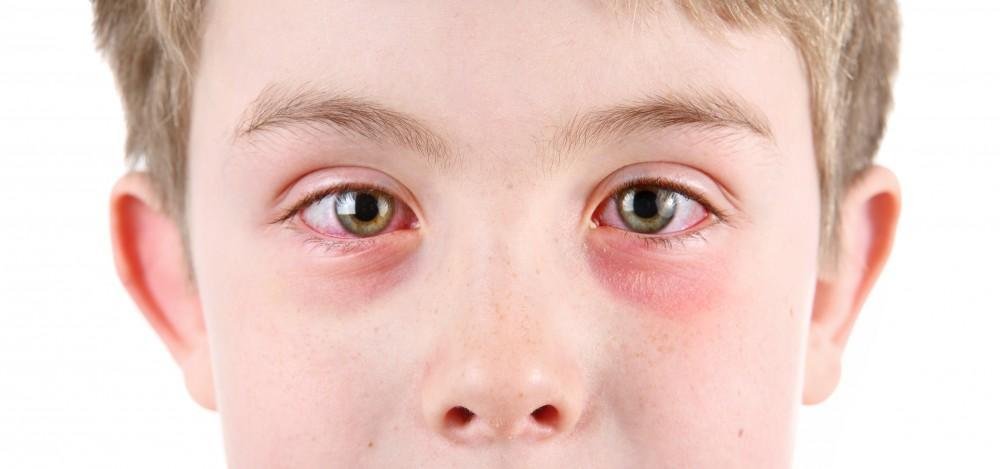Conjunctivitis, commonly referred to as “pink eye,” is a prevalent eye condition characterized by inflammation of the conjunctiva.

Conjunctivitis, commonly referred to as “pink eye,” is a prevalent eye condition characterized by inflammation of the conjunctiva. The conjunctiva is a thin, transparent layer of tissue that covers the white part of the eye and contains blood vessels. In cases of inflammation, these vessels become engorged, giving the eye a reddish appearance, hence the name “pink eye.”
This condition is particularly common among children and individuals responsible for maintaining a safe environment, as they are more likely to come into contact with infected individuals. Conjunctivitis can be caused by viral or bacterial infections, as well as allergens, and it is highly contagious.
Conjunctivitis is a common and usually benign condition. However, accurate diagnosis and appropriate treatment are important to manage symptoms and prevent the spread of infectious forms of conjunctivitis. If you suspect you have conjunctivitis or are experiencing persistent eye symptoms, it’s advisable to consult with a healthcare professional for proper evaluation and guidance.
Types of Conjunctivitis
Conjunctivitis can be categorized into three primary types:
- Viral Conjunctivitis: Viral conjunctivitis is predominantly caused by highly contagious viruses. Most of the viruses responsible for this condition are transmitted through hand-to-eye contact. Notable viruses that cause viral conjunctivitis include adenovirus, rubella virus, and various herpes viruses.
- Bacterial Conjunctivitis: Bacterial conjunctivitis results from bacterial infections and is typically spread through person-to-person contact or contact with contaminated objects. This form of conjunctivitis often requires antibiotic treatment and is associated with bacteria such as Haemophilus influenzae and Streptococcus pneumonia.
- Allergic Conjunctivitis: Allergic conjunctivitis is an inflammatory response of the conjunctiva to allergens, such as pollen. It is part of a larger systemic atopic reaction and is usually seasonal, often linked to upper respiratory tract symptoms.
Epidemiology
In September 2023, several cities in Pakistan reported an outbreak of conjunctivitis, with cases initially emerging in Karachi and later spreading to Lahore. The province of Punjab alone reported 86,133 cases of pink eye infection, underscoring the significance of understanding and managing this condition.
Symptoms of Conjunctivitis
The hallmark symptom of conjunctivitis is the redness of the eye, leading to its characteristic pink appearance. Other common symptoms include:
- Redness: The whites of the eyes may appear pink or red.
- Itching is especially common in allergic conjunctivitis.
- Tearing: excessive tearing or watery eyes.
- Discharge: a watery or mucous-like discharge, which may be more pronounced in bacterial conjunctivitis.
- Swelling: swelling of the eyelids or conjunctiva.
- Sensitivity to Light: Photophobia, or sensitivity to light.
- Foreign body sensation: feeling as if there’s something in the eye.
Diagnosis
The diagnosis of conjunctivitis is primarily based on the physical appearance of the eyes, including their reddish hue, eye pain, and continuous tearing. Medical history and symptom assessment are crucial components of the initial diagnosis. Diagnostic steps may include:
- Visual acuity assessment
- Examination of the conjunctiva
- Specialized eye tests for assessing the inner structures of the eye
Treatment
Treatment for conjunctivitis depends on the type of infection.
- Viral conjunctivitis: Viral infections typically resolve on their own within a week or two, and antiviral medication is usually unnecessary.
- Bacterial conjunctivitis: Bacterial infections require antibiotic eye drops or ointments, as prescribed by a healthcare professional.
- Allergic Conjunctivitis: For allergic conjunctivitis, allergen avoidance is recommended when possible. Additionally, antihistamines and oral medications can be used for symptom management.
It is essential to complete the full course of medication as prescribed by a healthcare provider to prevent the recurrence of the infection.
Prevention
Several measures can be taken at home to manage conjunctivitis symptoms and prevent its spread, including:
- Avoiding the use of contact lenses
- Using a cool compress on the eyes
- Keeping glasses to protect against allergens
- Maintaining clean clothing
- Careful eye washing
- Avoid touching or rubbing the eyes.
- Not sharing eye drops with others
When to Seek Medical Attention:
- If symptoms are severe or worsening.
- If there is a thick, yellow, or green discharge.
- If there is pain in the eye.
- If vision is affected.
This article is jointly authored by Muhammad Hussain, Nazish Fatima, and Bilal Ahmad from the University of Veterinary and Animal Sciences Lahore sub-campus Jhang.